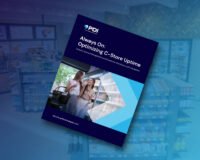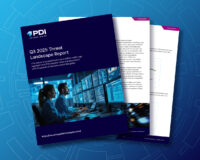
We all love our cars and they’re extremely useful. Even if you don’t own a vehicle, you most likely use some form of vehicular transportation to get around. Between cars, trains, and buses, transportation has become the leading source of emissions in the country, according to the U.S. Environmental Protection Agency. That means every time you hop in a vehicle to go somewhere, it’s releasing harmful gasses into the atmosphere as it takes you to your final destination.
This is an unfortunate side effect, but it’s one we’re able to actively address.
Although we simply can’t simply stop driving, there are several small ways to lessen your carbon footprint by reducing your own car’s emissions. What’s even better, all of these reduction strategies can save you a little money as well.
Here are five easy ways to improve your fuel efficiency.
1. Reduce idle time
The average car idles for approximately six minutes per day. While that may not feel like a lot, over the course of a year, that number totals up to over 36 hours. Since an hour of idle time wastes half a gallon of gas, you’re looking at 18 gallons of gas used every year to just sit in your car while it’s running. Is that a full tank wasted? A little more? A little less? No matter, it’s still a significant amount.
Although some might argue that idling is more energy-efficient than turning your car on and off, that’s only true if you’re sitting for 10 seconds or less. Since most idle moments in the car are much longer, turning your car off is a much better option than idling.
Ideal times to avoid sitting idly include:
- Waiting in carpool lines
- Going through busy drive-thrus
- Sitting at a railroad crossing while a train goes by
By eliminating—or at least cutting back on—your idle time, you can save around $72 a year.
2. Check tire pressure
While you may be conscientious of your tire pressure when it’s cold outside, you should check tire pressure once a month. This is because under-inflated tires can lead to multiple issues with your car.
Not only will it waste gas and lead to poor gas mileage, but it’s also not as safe. Keeping tires properly inflated can help your car take you farther and make your tires last longer, both money-saving results courtesy of a regular tire pressure check.
In fact, properly inflated tires can increase your miles per gallon (MPG) by 1-3 percent. This can lead to potential fuel savings between 2-10.5 cents per gallon.
The ideal pound per square inch (PSI) of air in your tires should be between 30-35 percent, but you should always confirm your car’s specific range using the owner’s manual.
Expect to add a little air on a regular basis since most tires lose around 1 PSI every 30 days. When the weather is cooler, a temperature change of 10 degrees can increase this loss by another PSI.
3. Use cruise control
When appropriate, using cruise control can actually help your car perform more efficiently. This is because cruise control allows you to regulate two driving behaviors that waste fuel—aggressive driving and speeding. Both behaviors can lead to slamming on your brakes, another fuel waster. Aggressive driving and hard braking can reduce your car’s efficiency by between 10-40 percent.
However, cruise control is not the solution for all driving. Sometimes you just have to make a conscientious choice to drive less aggressively. Cruise control is most effective:
- On the highway
- On long road trips, when you start to feel muscle fatigue (you still have to pay attention and keep your eyes on the road, but it can give your leg muscles a break)
- When there’s a long stretch of highway with little-to-no traffic
- When a section of highway has a constant speed for a significant distance
Using cruise control in these instances is ideal since you won’t have to keep adjusting the settings or have to tap the brakes constantly to slip back to fully manual driving.
On the flip side, don’t use cruise control if there’s any bad weather, particularly if the roads are wet. You should also avoid it if you’re feeling sleepy as the driver, or if you’re driving on city or neighborhood streets. A route with a lot of starts and stops is best managed without cruise control.
Taking advantage of this feature of your car, when appropriate, can save you between 35 cents and $1.40 per gallon of gas.
4. Schedule routine maintenance
Aside from your regular oil change and tire rotation, there are a few other specific items you should check regularly. When any of them are out of whack, your car operates less efficiently, wasting gas and potentially costing you more money. If an issue isn’t diagnosed soon enough, you may end up paying to replace a whole part instead of just one piece.
Make sure you regularly have your transmission, engine, and brakes checked. You’ll want to mitigate issues including bad spark plugs and brake pads that are too worn down. When it comes to your oil change, make sure that the right motor oil is going into your car. You can even try using an energy-conserving oil that can reduce engine friction.
An easy way to remember to perform regular maintenance on your car is to align it with your annual emissions check. Yes, you might need to have your oil changed more often, but this gives you a regular reminder that the rest of your car needs a check-up. Since the emissions test ensures your car is running efficiently on a broad scale, it’s an easy transition to check out all of the car’s parts for the same purpose.
Potential savings for maintaining the condition of your car can range from 3.5-14 cents per gallon.
5. Avoid excess weight
When packing up your car, weight most likely isn’t on your mind—space is the primary concern. However, the amount of cargo you put into your vehicle, people aside, can impact the car’s performance. Adding as little as 100 pounds of extra weight to your car can change fuel efficiency.
It’s important to think about the total weight of what you’re adding to the car. A single bicycle can weigh up to 80 pounds based on the type, and a bike rack can add around 30 pounds itself.
A single suitcase may not feel too heavy, but what happens when everyone loads their own into the trunk? How much weight are you carrying now?
It’s also important to consider where you put your stuff when packing up the car. Rear-mounted cargo, and utilizing the trunk, allows your car to run more efficiently than roof-mounted storage. Too much weight on the roof can actually reduce your MPG by 10-25 percent on the highway.
Being conscientious of the weight you’re adding to your car, and where you put it, can save you between 3.5-87 cents per gallon.
Small changes make big differences
You may not feel like your carbon footprint is huge, but according to the EPA, the average U.S. passenger vehicle emits approximately 10,000 pounds of carbon dioxide a year, and that’s only from driving around 11,500 miles.
Taking any or all of these suggested steps lowers that emissions number, allowing your car to function at its best and use gas as efficiently as possible. This not only helps protect our environment from an excess of harmful emissions—it also helps you save a little money.
You can thrive in today’s digital economy. Contact us today to learn how we can help you transform your business.







